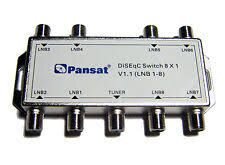I, too, live in the country and have power issues. Mainly brownouts and blackouts. I have UPS systems with AVR on all of my electronics to try and isolate myself from the power issues.
I have UPS's on everything. I have to. The power usually isn't off for more than a few seconds, but it may go off and on two or three times. Hard as hell on electronics as you know. I even have a line conditioner on my satellite and TV's to clean up the power. Pain in the butt to put up with that crap.


 sorry,had to be said
sorry,had to be said
